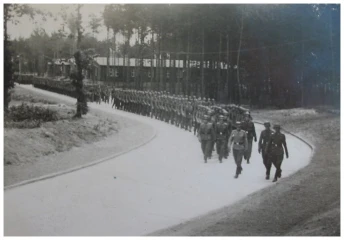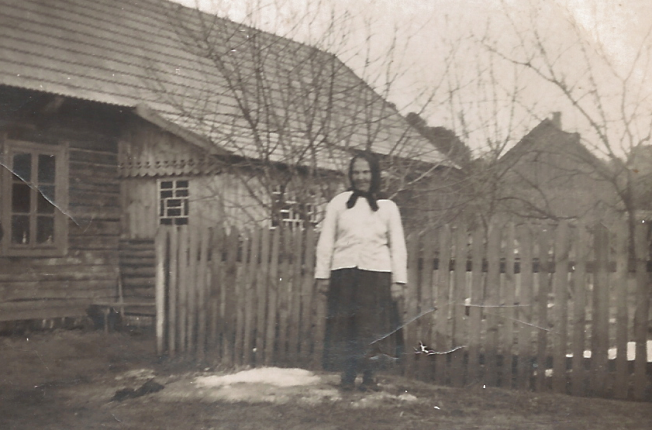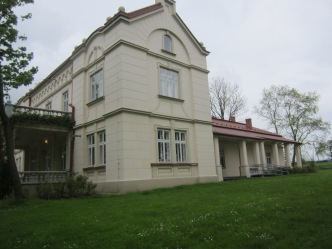Americans who descend from Polish immigrants often have limited or no knowledge of their families who were left behind. Those of us who have found the parish, ancestors’ names, and dates are often missing the life stories of not only their ancestors but those of the families who did not immigrate. An understanding of their struggles helps us to comprehend the worries of our now deceased grandparents, especially when we learn what their families went through during the Second World War.
Most Polish Americans descend from the peasant class, and it is likely their families remained in the villages and small towns. Their wartime experience was vastly different than the Poles who lived in larger cities such as Warsaw and Krakow. Unfortunately, much of our information comes from romanticized movies and novels that place a compelling story over reality and facts.
During my research for my newly released historical novel, War and Resistance in the Wilderness, I visited Poland three times and interviewed numerous Polish priests and historians, and my relatives who still live in the villages. Their collective memory of WWII gave me insight into the Poles’ struggles, daily lives, and their efforts to provide food, shelter, and assistance to the persecuted Jewish population and compelling reasons why they couldn’t.

Nazi Germans forcing Polish peasants from their homes for the expansion of Camp Heidelager in 1941.
The Polish people throughout the country suffered deliberate targeting by the Germans with almost every city, town, or village affected by random raids and massacres. My relatives in the wilderness villages of Niwiska and Trzesn in southeastern Poland were at mass on Sunday, Sept 3rd, when German gunfire exploded around the peaceful church while planes dropped their bombs.
My two sets of grandparents were poor farmers who lived in these adjoining wilderness villages that would be swallowed up by the Germans to build Camp Heidelager, the largest SS training camp outside of Germany. Soon after the occupation, every square inch of the village and its population were analyzed to determine their usefulness to the Reich. Virtually everyone over age fourteen became a forced laborer as the Germans needed cooks, servants, carpenters, and foresters to build their massive military complex. Schooling was halted for a time, but when it resumed, the children learned only enough to be good workers for the Germans. Village life for everyone was especially difficult with the Gestapo in their backyard.

Camp Heidelager in Occupied Poland during WWII
The younger people were routinely rounded up, usually at church on Sunday, to be sent as forced laborers in German factories or as farmworkers. The villagers’ farms were confiscated, and the locals had to work on these now German properties. They received a very small wage and were given ration coupons.
The food situation was perilous and unpredictable. Some farmers who were allowed to remain in their homes were permitted a sustenance garden, and one milk cow and horse. Of course, even a low-ranking German could confiscate any possession they wished. Most livestock had to be turned over to the German farms, and the unauthorized slaughter of farm animals often resulted in immediate death. The chickens’ egg production was also put on a German schedule. Desperate farmers bought eggs from the black market if their chickens had a bad week.
Bread, potatoes, cabbage, and beets were the staples of their diet. More desirable foods would have been turned over to the Germans to meet the family’s assigned quota. Chicken or other meats would have been a rare treat. In one story, my great aunt Zofia, who was the cook on a German farm, spilled the pot of Zurek that was the worker’s breakfast. Everyone went to work hungry that day. Zofia was also a helpful person to know because Anna Grabiec reported that Zofia gave her extra food to ward off near starvation. I was so pleased to see that Anna’s letters mentioned my great grandmother, Jadwiga and her family as very kind people.
It was Hitler’s intention to have Poland serve as Germany’s breadbasket by colonizing their farmlands with German farmers. The area within Germany was to be the industrial area of the Reich. When Hitler’s long-term goal was accomplished, the next item on his agenda was the complete extinction of the Polish people. The Germans allotted their civilian population a daily 2,400 calories, but Poles were allotted 600. The 1941 statistics show this not so subtle annihilation began in the early years of the war. My distant relative, Anna Grabiec, reported her mother’s death was due to starvation during the war. Life was cruel, and many were close to starvation. In the villages, the homes during the war were much like their ancestors. Houses typically had thatched or tin roofs, clay floors, and huge ceramic ovens. Most had one or two rooms with rafters for the children’s sleeping quarters. Many somber religious pictures graced the walls with dried herbs and flowers mixed in for decoration.
My great grandparents, Andrzej and Józefa Cudecki, were forced out of their home in Trzesn when the Germans decided to expand Camp Heidelager. Most villagers were given a few days to gather their belongings and leave the area. Where they went was of no concern to the Germans who provided no assistance. Without any means of communication, most put their most important possessions on a cart and in sacks and trudged to a distant village of some relative. The weary and desperate people hoped their siblings or cousins would find room for them in their small, clay floor home with a thatched roof.

Andrzej and Jozefa Cudecki before WWII
Andrzej had been the mayor of Trzesn but was still a poor man. He and a few others from his village found abandoned homes in a Jewish settlement in Radomysl Wilki and lived there for most of the war. Life must have been desperate for his family because his grandson was shot and killed by a German in a beet field. His family was starving, and the sixteen-year-old was only trying to assist his family. After his wife died in 1943, Andrzej returned to Trzesn to live with his son at a dilapidated manor house in his village. Andrzej’s daughter’s family left that home in Radomysl after the war when the Jewish owner returned to claim his property.

My Great Grandmother Jadwiga in front of her home in Niwiska, Poland
My other great grandmother, Jadwiga Bryk, was a widow who had an adult son and two adult daughters with sons and no husbands. They all lived with her in a very small home across from the Church of St. Nicholas. Much to my surprise, they were allowed to stay in their home. My theory is they were likely cooks and servants at the local manor house, which was turned into Gestapo headquarters and home for the chief SS officers. Also, any siblings or cousins from her birth village or Blizna were evacuated at the beginning of the war, so she had no one to turn to. Everyone had to serve the Reich, one way or another.

Hupka Manor House (Gestapo Headquarters during WWII)
The Germans forced Father Jan Kurek to abandon St. Nicholas church in Niwiska, and it sat unoccupied with its windows and metal bells buried in the cemetery. The priest sometimes made valiant attempts to conduct mass in an abandoned schoolhouse, but mostly had to serve his parishioners in their homes by commuting on a worn bicycle.
Your relatives in the rural villages of WWII Poland would have had similar experiences. Part Two of this series will describe the relationship between the Jews and the Catholic Poles and the various ways many Polish people helped to save the Jews who sought refuge in the countryside. Part Three will describe life in the larger cities of Poland during the War.
War and Resistance in the Wilderness is the story of these real people who endured six years living in Camp Heidelager, referred to as “Camp Wilderness” by Hitler. It is available in print or ebook on Amazon.
http://www.amazon.com/dp/1689779586

You do know that a prominent nazi was asked what happened to make Germany lose WWII.
After some thought. He said: “Germany progressed to other multiple things before Poland was fully digested.
Sent from my iPad
>
LikeLike
Most people don’t know that both Hitler and Himmler specifically stated their intentions to destroy the Polish nation, the Polish people, its culture, etc.
LikeLike
My father was from Sokolowa Wola just south of Ustrzyki Dolne, he was taken from his home when he was 16 to slave labour camp at Mannheim Germany.
Never see or heard from his family again.
Mother was from Holyn, same story.
LikeLike
So tragic. Most people don’t know this part of WWII in Poland.
LikeLike
Thank you for writing about this
LikeLike